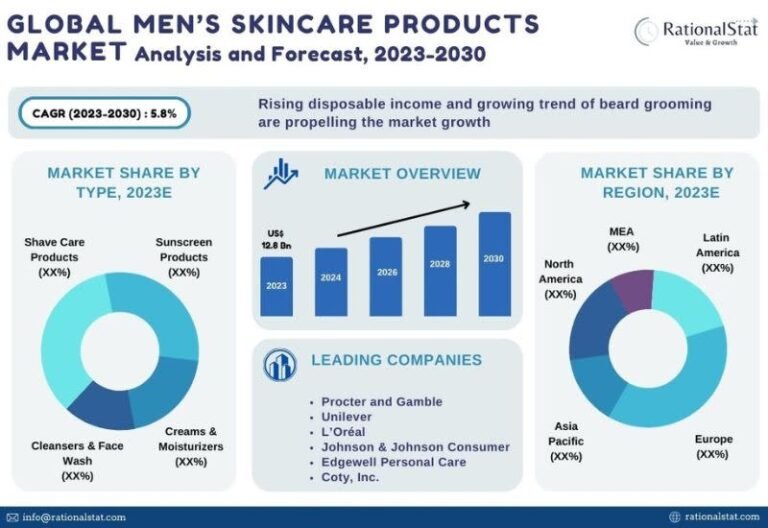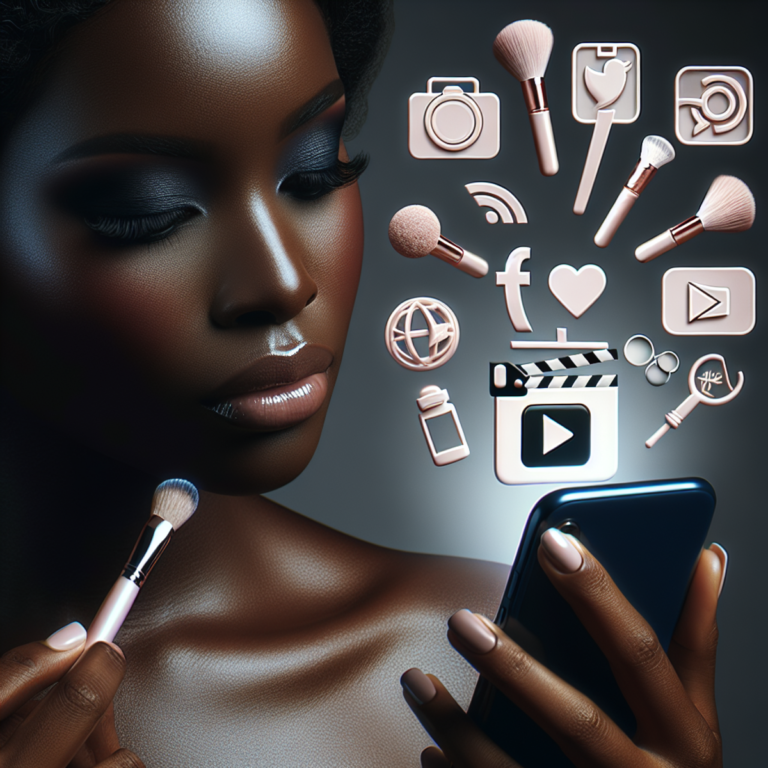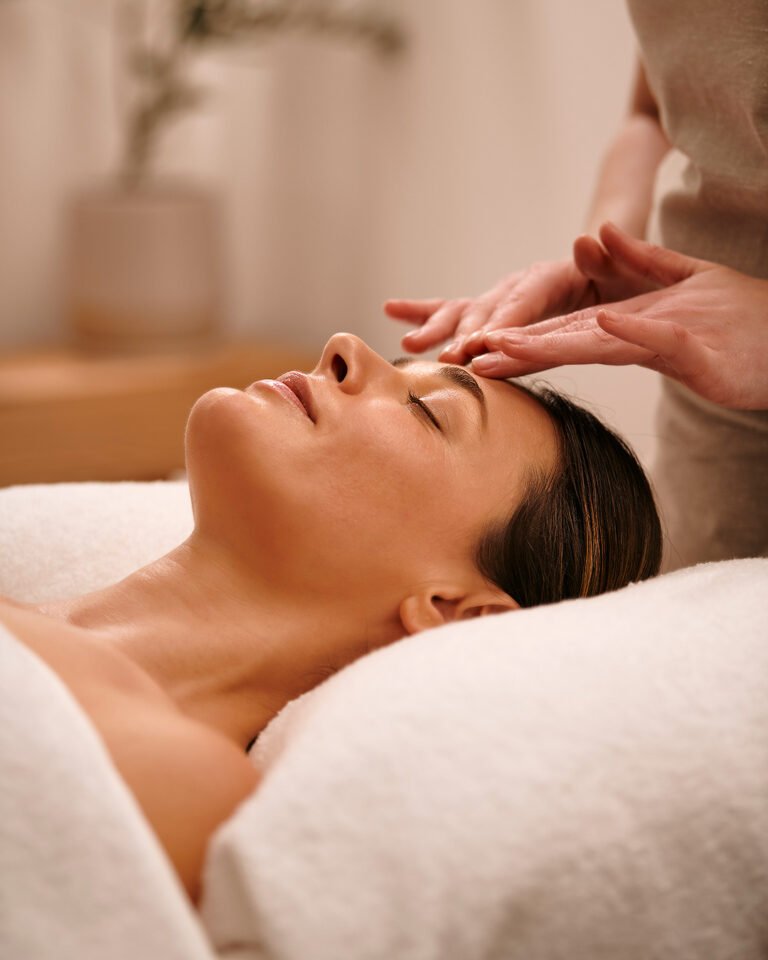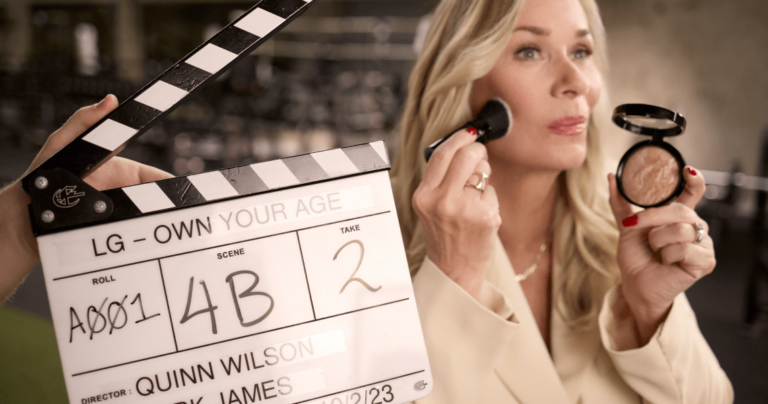Three Big Trends Impacting The Beauty Industry Right Now

Introduction
The beauty industry is always changing, with new trends and innovations shaping how products are marketed, made, and used. It’s important for professionals in the industry to keep up with these trends so they can stay ahead and meet the changing needs of consumers. In this article, we’ll look at three major trends that are currently affecting the beauty industry and talk about why they’re important for its future.
Why it’s important to keep up with industry trends
Like any industry, staying up-to-date with the latest trends is crucial for success in the beauty industry. By staying informed, professionals can predict changes in what consumers like, adjust their strategies as needed, and take advantage of new opportunities. Ignoring or falling behind on industry trends can mean missing out on business chances and becoming less relevant in a competitive market.
The three big trends in the beauty industry
Here are the three major trends we’ll be exploring:
- Marketing Changes and Technology Advancements: The relationship between marketing and technology has played a big part in making the beauty industry grow. New technology has changed how products are made, allowing for creative ingredients and personalized solutions. It has also made marketing better by letting companies target ads to specific groups of people, use data to make smarter decisions, and create interactive experiences for shoppers.
- Hyper-personalization Trend: AI/AR and Personalized Experiences: This trend is all about giving each person a unique experience with beauty products. Artificial intelligence (AI) and augmented reality (AR) technologies are key to making this happen. They can do things like show virtual try-ons of makeup, suggest products based on someone’s individual tastes and needs, or offer quizzes that help people find their perfect skincare routines.
- Biotech Trend: Sustainability through Science: With more focus on taking care of the Earth, the biotech trend has become popular in the beauty world. This trend involves using scientific discoveries to make beauty ingredients that are good for the environment. Instead of relying on chemicals like before, companies are finding ways to get natural and organic materials from living things. This helps reduce waste and pollution while still giving people effective beauty options.
Why these trends matter for the future of the beauty industry
These three trends have a big impact on where the beauty industry is headed:
- Marketing changes and technology advancements are changing how products are made, advertised, and used. Using technology lets companies offer personalized experiences and do marketing that really speaks to what consumers want.
- The hyper-personalization trend isn’t just about making shopping more fun – it also helps brands build loyalty with their customers. By giving people suggestions that fit them perfectly and letting them interact with products online, companies can make stronger connections with shoppers and make them happier.
- The biotech trend is a response to people wanting beauty items that are good for both themselves and the planet. More shoppers are thinking about how their choices affect the environment, so they’re looking for things that are made sustainably. By using biotech solutions, brands can show that they care about being eco-friendly while still offering products that work well.
These trends together shape what the beauty industry will look like in the future by encouraging new ideas, meeting what consumers want, and making things better for everyone involved. In the next sections, we’ll go deeper into each trend – talking about specific examples and what they mean for professionals in the beauty industry.
1. Marketing Changes and Technology Advancements
The beauty industry is always changing, and marketing and technology are driving this growth. Here are some key points to consider:
The Relationship Between Marketing and Technology
Marketing and technology are closely connected in the beauty industry, with technology advancements significantly affecting marketing strategies. Social media platforms, influencer collaborations, and digital advertising have completely changed how brands interact with their audience.
Impact of Technological Advancements on Product Formulation and Personalization
Technology has allowed beauty companies to create new and improved products through advanced research, formulation techniques, and manufacturing processes. From using 3D printing for cosmetics to employing artificial intelligence in skincare analysis, technology has made product development and personalization even better.
Role of Technology in Enhancing Marketing Effectiveness
Technology has given marketers the ability to create targeted and personalized campaigns by using data analytics, customer insights, and digital tools to improve marketing effectiveness. This includes using customer relationship management (CRM) systems, AI-powered chatbots for customer service, and making data-driven decisions for advertising.
Examples of Innovative Marketing Strategies and Technologies
- Virtual Reality (VR) and Augmented Reality (AR) experiences: Beauty brands are using AR technology to provide virtual try-on experiences for makeup products, allowing customers to see different shades and styles before buying.
- Personalized skincare analysis apps: Companies are creating mobile apps that use AI to analyze users’ skin conditions and give personalized product recommendations.
- Social commerce integration in the beauty industry: Businesses are adding e-commerce features into social media platforms, making it possible for people to buy directly from posts and stories.
These examples show how marketing changes and technology advancements are transforming the beauty industry by offering more engaging, personalized, and convenient experiences for consumers. The revolutionizing of B2C marketing, as discussed in this LinkedIn article, also plays a crucial role in shaping the future of the beauty industry.
2. Hyper-personalization Trend: AI/AR and Personalized Experiences
The beauty industry is embracing the hyper-personalization trend with the help of advanced technologies such as Artificial Intelligence (AI) and Augmented Reality (AR). This trend is revolutionizing the way consumers experience and interact with beauty products. Here are the key points to consider:
Explanation of the Hyper-personalization Trend
The hyper-personalization trend refers to the customization of products and experiences according to individual preferences, needs, and characteristics. In the beauty industry, this trend involves leveraging technology to provide personalized shopping experiences that cater to each customer’s unique requirements.
Utilizing AI/AR for Personalized Shopping Experiences
AI and AR technologies are being used in the beauty industry to offer personalized shopping experiences like never before. Here’s how these technologies are changing the way consumers discover and buy beauty products:
Virtual Try-Ons
AR allows consumers to virtually try on different makeup shades or hairstyles through their smartphones or other digital platforms. This helps them see how a particular product would look on them before buying it. Brands like Sephora and L’Oreal have created virtual try-on apps that use facial recognition technology to apply virtual makeup on users’ faces accurately.
Skin Analysis
AI-powered skin analysis tools let customers receive personalized skincare recommendations based on their specific skin concerns, such as acne, dryness, or aging. These tools analyze images of users’ faces and suggest tailored products that address their unique needs. For example, Neutrogena’s Skin360 app uses AI algorithms to assess users’ skin conditions and recommends suitable skincare routines.
Customization
AI algorithms can analyze customer data, including past purchases, skin type, and preferences, to make personalized beauty product recommendations. Brands like Function of Beauty offer customized haircare products by allowing customers to choose their specific hair goals and preferences. The algorithm then creates a unique product tailored to the individual’s needs.
Benefits of Using Quizzes and Virtual Try-Ons
The use of quizzes and virtual try-ons in the beauty industry offers several benefits for both brands and consumers:
- Enhanced Customer Engagement: Quizzes provide an interactive way for customers to discover products that align with their preferences. By answering a series of questions, customers receive personalized recommendations, making the shopping experience more engaging and enjoyable.
- Increased Confidence in Purchase Decisions: Virtual try-ons allow consumers to experiment with different looks without the commitment of purchasing physical products. This helps build confidence in their purchase decisions, reducing the likelihood of returns or dissatisfaction.
- Improved Personalization: By leveraging AI algorithms and customer data, brands can better understand their customers’ preferences and tailor product recommendations accordingly. This level of personalization enhances customer satisfaction and loyalty.
- Time and Cost Savings: Virtual try-on technologies eliminate the need for physical product samples or testers, saving time for both consumers and brands. Customers can explore various options virtually, reducing the time spent browsing in-store or waiting for samples to arrive.
The hyper-personalization trend powered by AI/AR is transforming the beauty industry by offering personalized shopping experiences and customized product recommendations. Through virtual try-ons, skin analysis tools, and customization options, brands are able to engage customers on a deeper level while providing them with confidence in their purchase decisions. As technology continues to advance, we can expect even greater levels of personalization in the beauty industry.
3. Biotech Trend: Sustainability through Science
The beauty industry is experiencing a significant transformation as it embraces biotechnology. With a strong focus on sustainability and utilizing natural organisms to develop innovative beauty products, this shift is driven by the rising demand for organic options from consumers and the industry’s own commitment to being more environmentally friendly.
Understanding the Biotech Trend in Beauty
Biotechnology in the beauty industry involves leveraging scientific advancements to create sustainable beauty ingredients sourced from natural organisms. This approach perfectly aligns with the growing interest in eco-friendly practices and ethical sourcing of raw materials. By employing biotech methods, companies can significantly reduce their environmental impact while continuing to offer exceptional products.
Sustainable Beauty Ingredients from Nature
Let’s explore some examples of sustainable beauty ingredients derived from plants and other natural sources:
- Plant Stem Cells: Extracts taken from plant stem cells are widely used in skincare products due to their ability to regenerate skin cells, resulting in anti-aging effects and enhanced skin protection.
- Microalgae: These tiny algae are rich in antioxidants and vital nutrients. Skincare products incorporate them to provide deep hydration and improve overall skin health.
- Fermented Botanicals: Fermentation of botanical extracts, such as plant roots or leaves, creates potent compounds that offer remarkable benefits for the skin. These compounds significantly enhance the efficacy of beauty products.
Employing these types of ingredients benefits both consumers and the environment. Consumers enjoy products that deliver tangible results, while the beauty industry becomes less reliant on traditional raw materials that harm nature.
Why Consumers Seek Natural and Organic Products
The biotech trend is largely fueled by the growing demand for natural and organic beauty products. Modern shoppers are increasingly conscious of the ingredients in their skincare routines and seek formulas that are safe, clean, and free from harmful chemicals or artificial additives. Consequently, beauty brands must prioritize sustainability and transparency throughout their entire production process.
Understanding the substantial influence consumers wield in driving this shift towards biotech-driven sustainability is crucial. Brands that effectively demonstrate their commitment to using natural organisms and biotechnological advances will undoubtedly resonate with eco-conscious shoppers.
By wholeheartedly embracing this trend, brands can align themselves with evolving consumer preferences while actively contributing to the preservation of our planet’s natural resources.
4. Men’s Market Growth and the Era of Inclusive Beauty
In recent years, the beauty industry has witnessed a significant surge in the men’s grooming market. This not only reflects the changing societal views but also presents brands with a unique opportunity to target male customers. Alongside this growth, there is an increasing demand for diversity and inclusion in beauty advertisements, highlighting the industry’s need to represent everyone.
The men’s grooming market is growing at an astonishing pace and is projected to be worth a staggering $110 billion by 2030, as per statistics. This growth can be attributed to more men embracing skincare products and prioritizing their appearance.
Several factors are contributing to the increased demand for skincare products among men, as outlined in this article. Firstly, there is a general shift towards self-care among people. Additionally, social media platforms like Instagram and TikTok have played a vital role in making skincare routines more accessible to men while enabling them to connect with others who share their interest in beauty.
Brands now have an excellent opportunity to cater specifically to the male demographic by developing products tailored to their needs. For instance, creating skincare items that address common issues like shaving irritation, acne, or signs of aging can be highly effective. By understanding what men desire from these products, brands can establish themselves as leaders in this domain.
Inclusive advertising has become paramount in today’s beauty industry. People expect brands to embrace diversity and challenge stereotypes in their campaigns. This trend is exemplified by brands like Fenty Beauty, founded by Rihanna, renowned for its extensive range of foundation shades that cater to different skin tones. Similarly, Glossier has made diversity a priority by featuring individuals from various backgrounds in their campaigns. These brands not only have achieved financial success but have also sparked crucial conversations about representation in the beauty world.
The rise of the men’s grooming market and the demand for diversity and inclusion in beauty advertisements are two significant trends shaping the industry. To thrive amidst these changes, brands must remain attuned to customer expectations while staying true to their core values. By embracing inclusivity and recognizing that everyone has unique aspirations, the beauty industry can continue to flourish while empowering individuals.
Embracing the Future: Navigating Change in the Beauty Industry
The beauty industry is always changing because of new technology, different things that people like, and how society is changing. As professionals in this fast-paced field, it’s important to know what might happen next and be able to change with it so we can stay successful. Let’s look at some important trends and how you can be ready for them.
Staying Ahead of Trends
It’s crucial for people working in beauty to know about new things that are happening. By knowing what’s going on, you can find new ways to do well and meet the needs of your customers. Here are some things you can do to stay ahead:
- Keep Learning: Always be willing to learn more and get better at what you do. Go to events where experts talk about beauty, join online classes, and connect with people who know a lot about the industry.
- Study the Market: Spend time looking at information about what people want and how they act when it comes to beauty. Look at social media posts, ask people questions, and read reports about what’s popular.
- Build Relationships: Make friends with other people who work in beauty. Talk to them about what they’re doing and listen to their ideas about where things might be going.
Adapting to Industry Changes
Being able to change is really important if you want to do well in an industry that’s always moving. As beauty keeps on transforming, we need to be ready to change our plans and the way we work. Here’s how you can do that:
- Be Quick with New Products: Because technology is getting better and people want things made just for them, we need to be ready to make new things all the time. Try out new materials, use ingredients that are good for the earth, and think about how you can give each person a unique experience.
- Try Different Ways to Tell People About Your Brand: The places where we advertise are always changing, and websites like Facebook and Instagram are really important for getting our name out there and making sales. Be willing to try new ideas and find ways to connect with lots of different people.
- Make Sure Everyone Feels Included: It’s really important that everyone feels welcome in the beauty world. This means thinking about all kinds of people when we make things and show them off in ads.
Final Thoughts
As you go into the future of the beauty industry, remember that change can be good if we use it to grow and come up with new ideas. These three big trends—changes in how we advertise and use technology, making things special for each person with help from computers, and using science to make better products—are going to be important for all of us who work in beauty.
By staying informed, being able to change, and making sure everyone feels included, you can be one of the people leading the way as things keep on getting better in the beauty industry.










